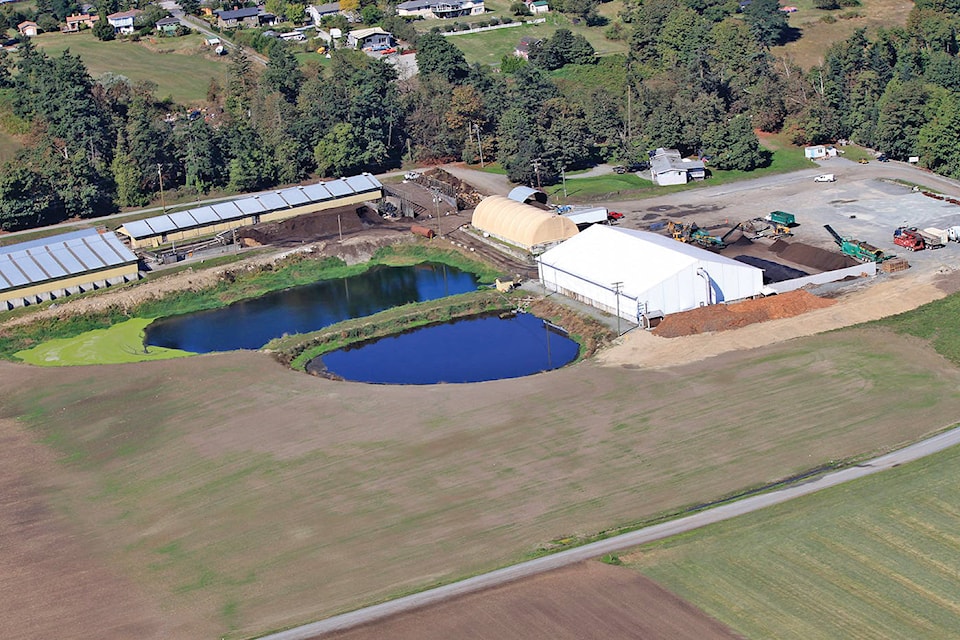With recreational marijuana set to be legal in Canada on July 1, growers are eyeing farmland, but at least one local group is opposed and the mayor of Central Saanich wants an extra six months for public consultation.
Ken Marriette, the communications co-ordinator with Citizens Protecting Agricultural Land (CPAL), said they are circulating a petition to show community opposition to marijuana greenhouses on farmland. CPAL was formed at the start of the new year, and Marriette said the group has grown quickly.
“We’re not against marijuana,” said Marriette. “What we’re against, and what we want to stop now, is the large-scale factory production of marijuana on prime farmland.”
Marriette himself lives in Tanner Ridge and is opposed to Evergreen Medicinal Supply’s plan to operate 21 greenhouses over 30 acres of farmland on the former Stanhope Dairy Farm. That project would require topsoil removed and concrete pads added. CPAL believes this as a poor use of arable land which could otherwise be used for food.
Marriette said the group, which began with 12 people in a living room, has been writing letters to Minister of Agriculture Lana Popham. Popham has begun a series of public consultations on the future of the ALR and group members have submitted comments online. They have also turned up at town hall meetings with Saanich-Gulf Islands MP Elizabeth May. He said May did not promise much, besides lobbying in Ottawa, because it’s a provincial issue, but she allowed them to circulate a petition during the meetings.
ALR land can be used for growing some non-food items, like flowers or decorative pumpkins, but Marriette is not against that because it is a “more traditional” use of the land and the soil is still being used. The lower profits are also a consideration.
“Do you see anyone rushing to grow flowers or pumpkins? I don’t think you do,” said Marriette.
In a statement to the PNR, Minister Popham praised the creation of the ALR in the 1970s, but “we couldn’t have foreseen some of the current pressures, like mega mansions and cannabis production as examples, that would shape and influence the land in the ALR today.”
She emphasized that the B.C. government shares the concerns they have heard from British Columbians, and encouraged them to participate in the public engagement process by going to engage.gov.bc.ca/agriculturallandreserve, or by email or mail.
CPAL members have also met for an hour and a half with Central Saanich Mayor Ryan Windsor, where they asked for his help.
Windsor recently asked council to consider a motion asking the premier and the agriculture minister to place a moratorium on the use of ALR land to grow marijuana until the province holds a minimum six-month review and consultation with farmers, municipalities, industry and the public.
“In 2015, when the B.C. Liberals … sort of opened the door to production of marijuana on farmland, I wasn’t really all that content at the time in the way they consulted,” said Windsor. “They sort of threw open the doors without any real conditions. To me, it’s a big change to the Agricultural Land Reserve’s mandate which is primarily food security, with maybe one exception, that you can grow flowers on farmland. Pretty much everything else is to do with food production.
“Marijuana’s a big change for that.”
Windsor cited Edmonton as an example, where he said a large grow op was proposed for industrial land as opposed to farmland. Windsor prefers this because the ALR’s primary mandate was to protect food security in the region and those sentiments have been included in Central Saanich’s Official Community Plan for 40 years.
When asked if nixing the greenhouses and growing the marijuana outside would change his mind, he said no.
“Council can disagree, but if you’re asking for my own perspective, frankly, it’s about food security, food related products, plant-based products more of a food-based nature.”
Windsor and his family operate de Vine Vineyards, which he acknowledges is not strictly food.
“Obviously, I’m in the wine business. Some people might take issue with that. But to me, wine and such is part of a food culture and that’s long established. I’m not sure there’s a reasonable argument out there that marijuana is part of food culture.”
Windsor said other than the Evergreen proposal, he has not personally heard of other applications to the District, but he has heard “rumblings” that other operations may be coming.
On the local level, there is some overlapping jurisdiction. Central Saanich Chief Administrative Officer Patrick Robins explained that land within the provincial Agricultural Land Reserve is also zoned as agricultural by the District. On that land, the province has deemed marijuana an agricultural use, so the District cannot stop growers. However, he said the District can regulate how grow ops are built and run. The District can limit site coverage (how much of the land is used for the operation), specify stormwater management strategies and require different kinds of buffers between the marijuana facility and neighbouring schools, roads, etc.
Within Central Saanich, there are areas outside the ALR that could also be used for growing commercial marijuana, including Rural Estate Zones, Single Commercial Zones and Light Industrial Zones. Since these are entirely within local jurisdiction, Central Saanich can both regulate and restrict grow ops on these lands. Staff are looking to supply a report to mayor and council in the coming weeks which looks at how other jurisdictions will adapt to legalization.
Councillors did not discuss the mayor’s motion on Feb. 5, but will instead discuss it on Feb. 19.
reporter@peninsulanewsreview.com
